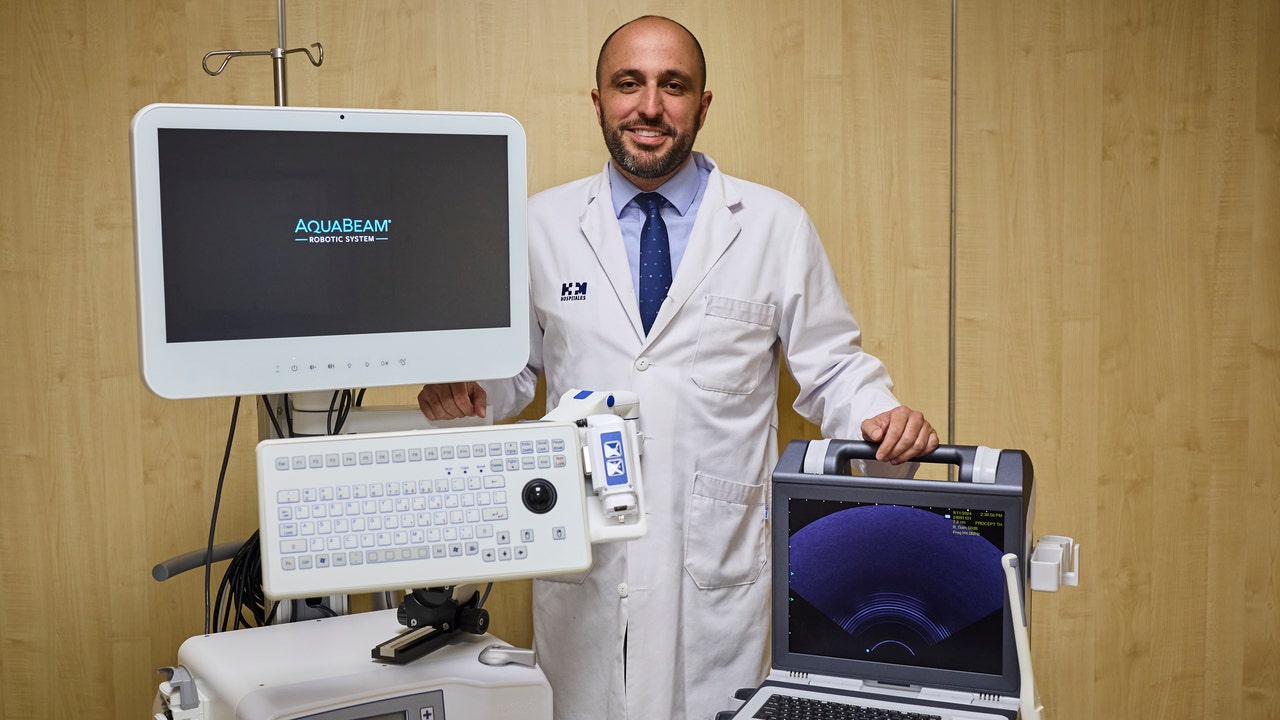Men’s health has a weak point and it is usually, almost always, the prostate. For this reason, each September 15th marks European Prostate Health Daya key date to remind men of the importance of annual check-ups and putting themselves in the hands of true specialists. This is the case of Dr. Juan Justo, Deputy Medical Director of ROC Clinic and urologist expert in prostate cancer and benign prostatic hyperplasia (BPH).
What is the HBP and what figures are handled?
This is the enlargement of the prostate gland that causes an obstruction to the exit of urine from the bladder, causing uncomfortable symptoms. It is extremely prevalent, being the most frequent benign disease in men and increasing in incidence with each decade of life. It manifests in half of men over the age of 50, a figure that increases to 70% in the 70s, meaning that practically all men over 80 years of age have some urinary symptom.
Does it affect the quality of life?
The effect varies depending on the stage of the disease, and is sometimes very limiting due to associated symptoms such as nocturia (getting up at night to urinate) which makes it difficult to rest, urinary leaks or incontinence, or for example the urgent need to urinate when there is no bathroom nearby.
What symptoms should prompt consultation with a specialist?
The appearance of this obstruction will give rise to symptoms such as a weak, intermittent urine stream, a sensation of incomplete emptying, a very frequent feeling of needing to urinate during the day and night, or incontinence. In more advanced stages, it can lead to hematuria (blood in the urine) or urinary tract infections. If these symptoms appear, a specialist should be consulted to determine the severity of the hyperplasia and to establish the most appropriate treatment as soon as possible.
Are reviews key?
Without a doubt, because a simple PSA test can put us on the trail of prostate cancer, which is curable if diagnosed in its early stages. And during these check-ups, if we detect signs of BPH, it is possible to treat it thanks to the various very effective treatments available to us, which prevent long-term damage to the bladder.
What are the latest treatments for BPH?
BPH surgery has evolved greatly in recent years and today urologists have a very broad therapeutic arsenal for their patients. In this sense, it is essential to put yourself in the hands of a specialist in prostate pathology to evaluate the one that best suits each patient. We must emphasize that the treatment paradigm is changing because, although most BPH interventions have an impact on the patient’s sexual and ejaculatory sphere (with the consequent impact on their quality of life), there are currently new treatments that seek to alleviate the symptoms of BPH while preserving sexual function. One of the most innovative and consolidated is the AquaBeam system, a minimally invasive robotic technology which allows the ablation of prostate tissue using a jet of saline solution, after personalized planning with the instructions provided by the surgeon.
Why is it so revolutionary?
Because it is the first specific robotic treatment for BPH. It is a system of very high precisionallowing us to treat the prostate in a completely personalized way for each patient, since I tell the robot which area I want to treat and, based on that, it performs a customized treatment without compromising sexual functions or urinary continence with excellent results in improving their urinary symptoms.
What advantages does it bring?
The truth is that many, being a very attractive treatment and valid for most menas it allows treating, unlike other surgical options, all prostate shapes and sizes. In addition, it has very low (practically non-existent) rates of urinary incontinence and rates of around 90% preservation of ejaculatory functionAnd recovery is very fast, since there is no incision, there is no wound, which requires less hospital stay (24-48 hours) and discharge without a urinary catheter. In approximately one week, normal daily activity is resumed.
Is it suitable for any man?
It is really valid for all patients, since we can treat prostates of any size, rapidly improving symptoms and preserving the sexual sphere. The current surgical arsenal is very broad and the key is to make a correct selection of the patient according to his needs.
At ROC Clinic they have been pioneers in its use in our country. What figures do they handle?
The AquaBeam technique has been used worldwide and has provided excellent tracking results for years. At ROC Clinic we incorporated this program in 2021 and since then there are many patients treated with rates of 90% preservation of ejaculation and with very good functional and satisfaction resultsIn addition, I have the honour of being an international proctor of the technique, being a teaching centre where many European urologists come to train, more than 40 this year, which is always enriching and a personal satisfaction.
Where is the future of HBP going?
The greatest development will come through image-guided treatments and the implementation of Artificial Intelligence in robotic systems.
A final recommendation for men?
It is still necessary to raise awareness about the importance of men caring about their health. Prostate disease is the most common, but with a very simple annual check-up from the age of 50, or from 45 if there is a history of it, it is possible to find a solution early, minimising the impact on quality of life.

